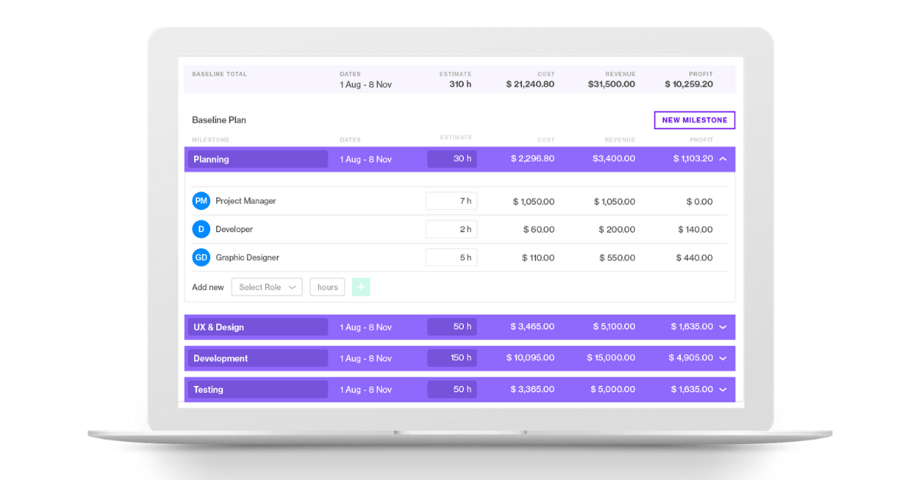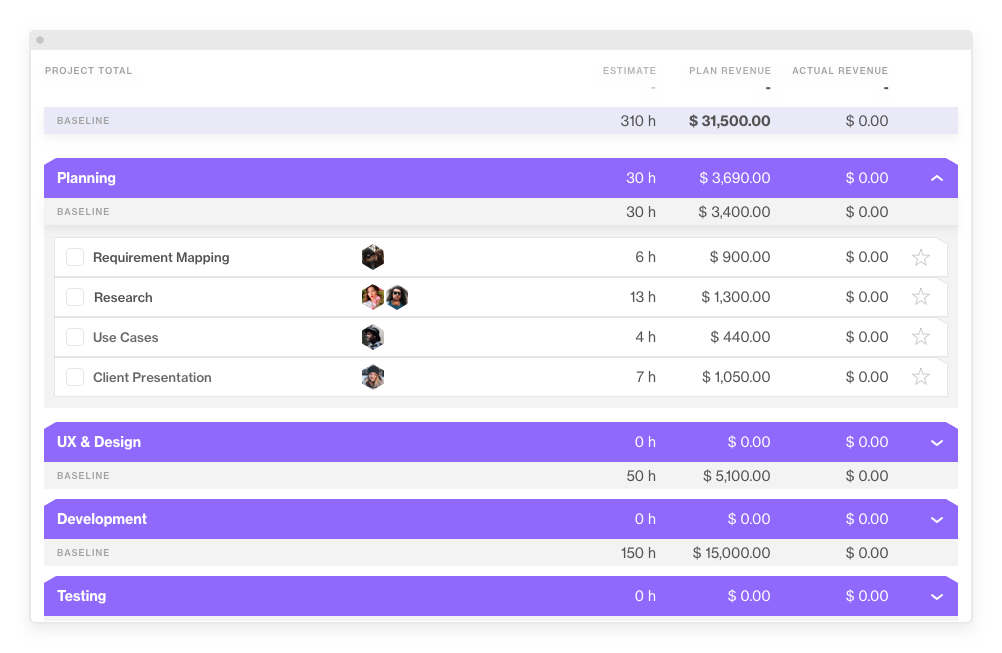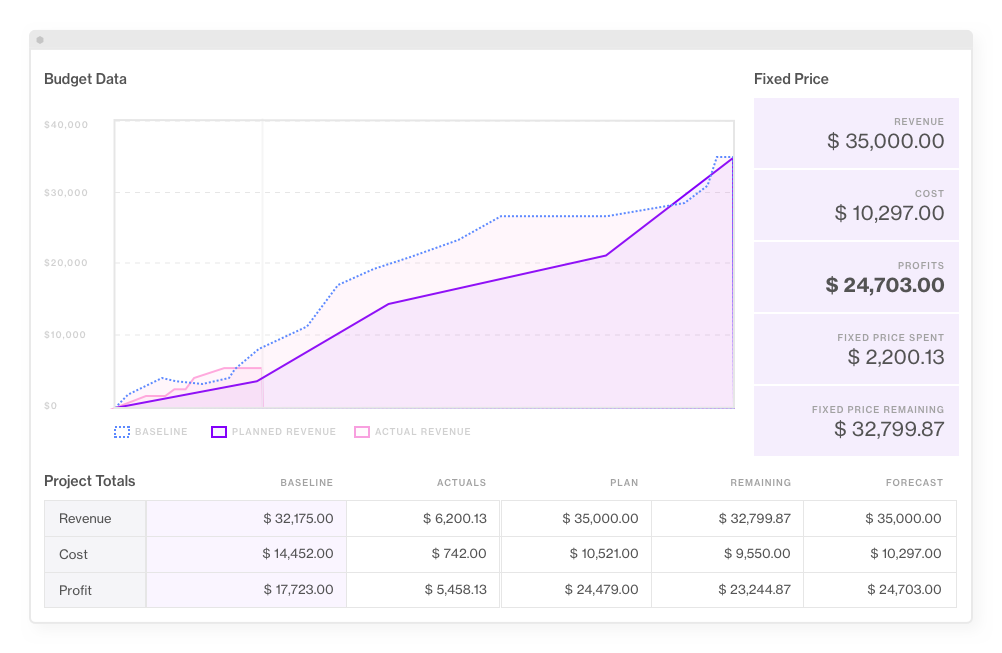Why You Need a Performance Measurement Baseline

Have you ever been managing a project, only to find out it’s no longer sustainable for the business? It happens a lot, with the reasons being poor project cost estimation, communication glitches, lack of proper performance assessment, change requests. While the challenges may vary, there’s one thing that can help you spot them early on – a performance measurement baseline (PMB).
What is a performance measurement baseline?
First things first, a performance measurement baseline is a tool used by project managers to define project parameters – outline the project cost, scope, and schedule. When the estimates are approved and set in stone, the PMB becomes a reference center for measuring project success, earned value, or any deviations from the initial plan. Mainly, a PMB is needed to compare your project plan and actuals to an initially approved budget. It’s a measuring stick you’ll pull out every time stakeholders approach for updates.
If you’re a visual learner like me, I hope you won’t mind an example of a performance measurement baseline in Forecast:

Made in mind with Time & Material and Fixed Price projects, your baseline target can either be specified at the outset, or will tally up automatically as you estimate milestones on the level of roles. Our Baseline includes the elements, such as Total Work Estimate and Total Baseline Cost, Revenue, and Profit.
The benefits of a performance measurement baseline
Why is a performance measurement baseline so important? Simply because the benefits are numerous. Having a PMB not only helps you keep the project in check, but also gives you the capability to improve communication and optimize the return on investment of your projects. Let’s zip through each.
1. Improved communication
According to IT Cortex, 57% of projects fail due to a breakdown in communications. It can happen at the stage when account executives sell certain services, but project managers, late to the party, end up with a vague understanding of what was actually sold. A performance measurement baseline can tear these silos walls down, literally keeping everyone on same page and contributing to the understanding of a common goal.
2. Better risk and change control
The PMB is not only a commitment to deliver on time and within budget, it’s a line that stakeholders can’t cross either. If avoiding scope creep is your ultimate goal, then baselining should become a staple in your change management process. It formalizes boundaries for everyone, not just project managers, and is needed to make sure you don’t overservice clients in the end.

3. Finer estimates and project experiences overall
It’s worth mentioning that performance measurement baselines improve the accuracy and precision of your estimates. Giving you the capability to rely on key figures when estimating the project scope, schedule, and costs, PMBs highlight when there’s just no way to line up the price with the expectations. Serving as benchmarks, baselines also tell you when you need to optimize.
4. Effective performance assessment
As the famous saying goes, you can’t manage what you can’t measure. What project managers – and businesses overall need – is improved performance assessment on key project metrics. To evaluate the success of any project, it’s important to set clear fixed targets and compare actuals to them. When you have nailed down the baseline, it’s easier to report where you stand against the targets and track performance in real time.
Not setting a baseline, in turn, makes it difficult to understand project management KPIs. This is true for any business, and especially for companies delivering professional services that want to harvest higher returns from their projects in the end.
5. Higher returns on investment
On a final note, a performance measurement baseline comes to the rescue of every business that wants to take the returns of their projects from zero to hero. Keeping your baseline front and center helps you meet all project objectives, including profitability. Planning projects with baseline in mind forces a new way of thinking, when you start to re-imagine project operations and recognize trends that can help the business earn more.
Because performance measurement baseline is truly a backbone of successful projects, the benefits it carries are numerous. Working with a baseline actually introduces a brand new way of thinking. If you haven’t adopted this practice yet, read on how to do it efficiently.
Continue reading: How to Set a Project Baseline
You might like to read these articles on our blog..
Subscribe to the Forecast Newsletter
Get a monthly roundup of productivity tips & hacks delivered straight to your inbox
